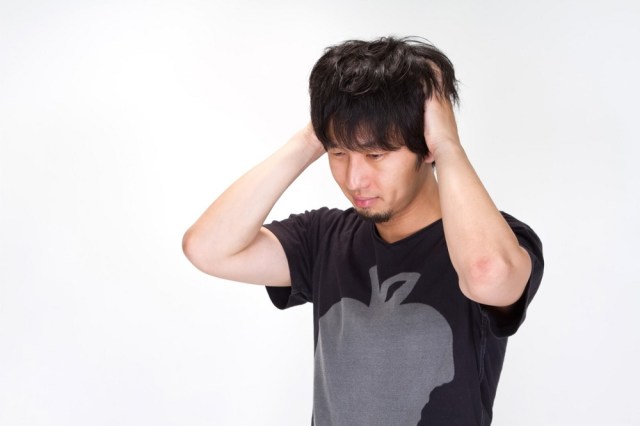GOOSSHUSSHU! Hitachi has an insane onomatopoeia troubleshooting guide for its washing machine

Thanks, Hitachi…we think…
No matter how well-made an appliance is, eventually it’ll wear out, sticking you with either a hefty repair bill or having to bite the bullet and just buy a new unit altogether. However, even a washing machine that has nothing wrong with it will still make all sorts of sloshing and whirring sounds while its running, so how can you tell which noises are perfectly fine and which indicate something is about to break?
If you’re the owner of a Hitachi-brand drum-type (front-loading) washing machine, you can check out their online FAQ page on the subject, which has a helpful explanation of all the sounds that a properly operating machine will make during its wash cycle. Well, more accurately, the explanation would be helpful, if it also wasn’t absolutely insane in terms of how much baffling onomatopoeia it has.
Join us as we descend down the 13 steps of Hitachi washer madness, and see if you can guess what each one is before reading the explanation (our high score was zero).
1. JUJU (rendered in Japanese as ジュジュ)
We start off with “JUJU,” which Hitachi says is the sound your machine should make as water fills the drum. If it’s too loud, like, for example if you would prefer “juju” to “JUJU,” the manufacturer recommends tightening the spigot for where your washing machine is hooked up to your home’s water supply.
2. ZUZUZU (ズズズッ)
This, obviously, is the sound of the circulation pump sucking in air. Hitachi reminds customers that the volume is not a constant, and it may occasionally sound louder than usual for a brief period of time.
3. SHAA (シャー)
You’ll hear this as the machine pre-rinses your laundry to make sure the detergent doesn’t slide off before it can cleanse the fabrics, a process which apparently is aurally indistinct from the name of the recurring antagonist from robot anime Mobile Suit Gundam.
4. UOON UIIN (ウォーン・ウィーン)
The familiar sound of the circulation pump’s early-stage motion.
5. TON TON TON (トン・トン・トン)
And this is the sound of the circulation pump doing its primary workload as your clothes are being actively washed.
6. KYUKKYU (キュッ・キュッ)
The sound of the pulsator wings spinning.
7. UIIN (ウィーン)
You’ll have to listen closely, because you may or may not hear this one, depending on what sort of wash course you’ve selected. If you’ve set your machine for a “warm mist” wash, though, you’ll know the machine is spraying your clothes with warm water when it makes this noise. Also, take care not to confuse this with UOON UIIN, as UIIN is a separate sound denoting an entirely different process.
8. GOOSSHUSSHU (ゴーッ・シュッシュッ)
Another entry you’ll hear on special occasions, this time if you’ve selected “warm Niagara wash,” which involves spraying your load with a mist of detergent at this stage. Truly, GOOSSHUSSHU is the wound of luxury.
9. BUUN (ブーン)
The soothing sound of the cooling fan if your machine’s internal control board is running too hot.
10. KIIIN (キィーン)
The sound of the motor as it goes into the spin cycle. The faster its spinning, the louder the noise.
11. POKOPOKO (ポコポコ)
No, this isn’t that Studio Ghibli movie about tanuki (that’s Pom Poko). POKOPOKO is the noise of the drainage hose as the mixture of water and air flows out of the drum.
12. KIIIN (キィーン)
Our pal KIIIN shows up again as the spin cycle winds down.
13. SHAA POKOPOKO (シャー・ポコポコ)
Finally, this is one you might hear if, after taking your clothes out, you run the machine’s self-cleaning rinse cycle.
▼ Couldn’t be more simple than that, right?

All kidding aside, there actually is a practical, useful aspect to Hitachi’s list of borderline gibberish. Sure, it’s probably impossible to simply check in on your machine half-way through the cycle and think “Oh, good, it’s making the GOOSSHUSSHU sound. Everything is fine.” But if you’re listening from the very beginning, or can simply hear the washing machine from your living room or wherever else you happen to be while it’s running, you can at least get a baseline idea of what Hitachi is talking about when they JUJU for the first noise it should make, and following along with the “everything is OK” sequence is sort of possible since many of the sounds have either a flowing or staccato feel to them.
That should at least let you know if your washing machine is hitting the number of steps it should in the wash cycle, and if something does go wrong, it’ll be easier to tell where the problem occurred if you need to explain it to a repairman or customer service rep.
And besides, wouldn’t all appliance troubleshooting be better if it followed JoJo’s Bizarre Adventures rules?
Source: Hitachi via Twitter/@tb_bot via IT Media
Top image: Eco no Moto (edited by SoraNes24)
Insert image: Pakutaso
● Want to hear about SoraNews24’s latest articles as soon as they’re published? Follow us on Facebook and Twitter!
Credit:

0 comments:
Post a Comment